Youth may be wasted on the young, but secure their loyalty and you’ve got a loyal customer base for years to come. Leading retailers discuss what they do to make regular customers out of young people
Young people are always being typecast: in the 1990s it was Generation X, then it was Generation Y: now, within the world of grocery shoppers at least, they have been labelled Generation C. That’s a ‘C’ for convenience, according to HIM Research & Consulting, who coined the phrase. It is debateable whether a whole demographic wants to be pigeon-holed under one title, but there is no doubt that so-called Generation C are your future shoppers - and that HIM’s definition rings broadly true.
In a nutshell, HIM says Generation C want to be spoon fed with meal solutions; they want fast, efficient service and to be technologically engaged within and beyond the four walls of your store.
The younger end of the Generation C age spectrum don’t just want somewhere to shop, they want somewhere to hang out. One “important” way to draw in the young crowd is through food to go, which Londis Stoke retailer Dave Brunt recently expanded and supplemented with a Tchibo coffee machine - and a £3 breakfast bap and coffee meal deal helps drive footfall.
Paul Stone, who owns four Spar stores in Manchester, agrees that food to go and coffee is key to luring Generation C. “It’s all about solving problems, so focus on foodservice and ‘feed me now’,” he says.
Paul advises retailers to transform their stores into a social hub: “You need seating and free wi-fi to start with, and if people are eating and drinking they’re spending more time at your store.”
He has also taken a more relaxed approach to news and magazines at his new store in Manchester’s Princes Street. “We’ve sited news and mags next to the seating area, and it doesn’t matter if people pick them up and don’t buy them,” he says. All in all, 40% of the floor space at the city centre store is devoted to food to go.
Speedy shopping is the way forward
Speed of service is an essential for Generation C, and increasingly expected among all generations.
“More than 50% of sales are now on credit and debit card, so we’ve installed contactless, which is cheaper anyway,” says Manchester Spar retailer Paul Stone. “People don’t want to queue anymore.”
In Plymouth, more than half of Spar North Hill’s transactions are also made in card payments now, adds store manager Peter Ewing. “New technologies have been hugely improved in the past few years, allowing us to take card payments for £1 or over, whereas a few years ago we’d have had a minimum of £6 basket spend,” he says. “Contactless is just another way to move forward with this and what also impresses us is how quick the process is.”
It’s not just the young who appreciate contactless, says Jamie Keshwara. “It’s actually more popular with older people in our stores as they don’t have to remember their PIN,” he explains.
Chris Ward of Eurospar Milford Haven in Pembrokeshire recently introduced an in-store Subway to complement his existing food- to-go offer in order to attract more young customers. “Subway certainly brings in a younger crowd - they will sit in, take advantage of offers and the free refills (which have to be watched), make use of the free in-store wi-fi, watch a bit of the TV and generally socialise,” he says. Occasionally there are behavioural issues, but mutual respect is the key to dealing with any potential problems, Chris adds.
In Plymouth, Peter Ewing, manager of Spar North Hill, says the introduction of Subway last year has been the store’s “biggest success to date”. He adds: “Food for now is definitely a big hit for the younger market.”
The product mix
In terms of shopping, getting the product mix right is obviously crucial, especially with alcohol where you need to offer “the right range at the right price,” says Dave.
Spar North Hill caters to a large number of students due to its close proximity to the university, so manager Peter Ewing knows the demographic well. “First and foremost is the right products and identifying market trends. For example, alcohol trends have changed dramatically over the past few years. It used to be alcopops and now it’s all the quirky beers and ciders,” he says. To help drive volume sales he has big bulk stacks of beer located around the store.
Promotions on key brands, rather than own brand, are also important. “Own brand isn’t so big for the youngsters; they would buy Coca-Cola/Pepsi over our own brand. Our own-brand promotions are really hard to get the students to participate in,” Peter explains.
In terms of spirits, Paul says the latest trend among young people is market polarisation. “We’re doing a lot of premium spirits, as well as value such as Spar brand,” he says. But it is also about the in-store theatre and selling the extras to get people inspired. “We’re selling disposable shot glasses, cocktail umbrellas and big red plastic cups which seems to be popular in the US - we sell about 40 of those a week,” Paul adds.
The idea for the red plastic cups came from a member of staff, which is another useful source to mine. “Always ask your staff about latest trends,” Paul advises.
Jamie Keshwara of Nisa Whittlesey, adds that he and his brother Anish “always ask our staff what is popular with young people”, while in Plymouth Peter underlines the perks of hiring the target audience. “What better way to get an idea of what the younger generation want than by employing them as well,” he says.
Digital marketing
Retailers are increasingly turning to digital marketing to reach out to their customers, especially the younger ones who have become known as ‘digital natives’. “Youngsters today can’t do without their mobiles so we need to communicate to them through their phones,” says Dave.
This is highlighted by the widening gap in the effectiveness of traditional print and digital marketing, adds Jamie. “Nisa commissioned some research for our store and only about 11% of people who received our promotional leaflets were influenced by them - and it cost us about £540 every three weeks,” he says. “So we started focusing more on Facebook and now we can see how many people we reach and we can target them with advertising, which we pay for. We recently promoted fresh meat on offer when we over-stocked, and it all sold out. We under-estimated how effective it would be promoting it on Facebook.”
Both Dave and Paul are trialling the bigDL app, which enables store owners to distribute offers and deals directly to the smartphones of bigDL users through beacon technology. According to bigDL commercial director Mark Biscoe, Dave’s store is the first to take multiple branded coupons that are redeemed via the app and go straight from the customer’s mobile to his epos.
“It’s early days - I’m the guinea pig with Londis,” Dave says. “Once people have the app, they can see the offers available. We’ve just put a couple of promos on it for Milk Tray and Russian Standard vodka.”
He is aiming to get 50 sign-ups to start with, but the key is to encourage customers to download the app in the first place - so he is offering free coffee for those who do.
Paul, who is trialling bigDL in three stores, has adopted a similar approach. “The most success we have in getting sign-ups is when we have offered a free coffee.”
It may be early days, but Dave - who is a veteran retailer of 30 years - is fully behind the brave new digital world represented by bigDL. “The concept is really good - it’s like a digital version of cutting out vouchers - and we have total control over it. We can do tailored promos for the app.”
According to Biscoe, the mobile coupons are seeing a 16% redemption, compared with 1% on paper coupons. Furthermore, the demand for apps such as bigDL is huge; a survey by The Retail Practice found that 97% of people would download a free app with the best high street deals and money-off vouchers.
Peter says Spar’s ‘Shop and Win’ mobile promotional campaign - which specifically targets younger shoppers - has been a big hit: “It has really given us an edge as far as loyalty is concerned.” The campaign, which ran throughout the first few weeks of the year as well as last summer, was designed as a footfall driver and offered customers the chance to win daily cash prizes, as well as money-off product vouchers.
Andy Burt, Spar’s senior marketing manager, says such initiatives are “incredibly important in terms of reaching out” to young people. He says about 200,000 people received the mobile vouchers, with a redemption rate of 27%. About three-fifths of those who redeemed their vouchers were female, aged between 18 and 44. “But me must keep it simple so we don’t alientate the other two-fifths,” he adds.
Mandeep Haire, of Biddick Store Londis, near Newcastle, was set to trial the Cornershop Online app as C-Store went to press. He already had 40 or 50 of his customers signed up, who he lured with a £1 off a shop to download the app. He hopes to have 300 or 400 signed up, meaning he can phase out his promotional leaflets. “It costs us about £200 a month to send out the leaflets to a few thousand people, and the strike rates is about 3% - so the same amount of people who pay any attention will hopefully be signed up to the app.”
Echoing the comments of other retailers, he says: “We need to interact with our shoppers when they’re not in the store. Increasingly, customers are on their phones in the shop.” Mandeep will use the app to send promotions and message alerts to customers “telling them the ATM is stocked up, or a batch of fresh bread is in, for example”.
He prefers the autonomy afforded by the cornershop online app, rather than one controlled by symbol groups. “We can create what we want and opt in and out of Londis promotions,” he adds. “There’s also a loyalty side to it, in which we’ll give customers 1% or 2% of their shopping on top of the promos. It’s the way to go in convenience.”
And how did Mandeep primarily advertise the money-saving app to his customers? Well, on Twitter, naturally.
The roots of loyalty
The next generation has always been a focus for Jonathan James, former ACS chairman and owner of Budgens in Dersingham, Norfolk.
It’s about “putting a face behind the fascia,” he says. “We had 86 children in our old Soham store one day to talk about the benefits of fruit. We had great feedback from it and it raises our profile among young people. It generates loyalty early on, and they’re also potential team members of the future,” he adds.
“We can build loyalty from a young age,” adds Chris Ward, of Spar Milford Haven, who engages with local schools by sponsoring a number of events and encouraging teachers to bring in their younger classes at Christmas.
“The children post their letters to Santa into our custom-built Santa box, and we then give them all a goodie bag and have a quick chat on good behaviour. We use a big map to explain where Santa lives and how the letters get there,” he adds.
“It’s a great fun experience for the kids and customers - we had 100 children in the store one afternoon before Christmas.”















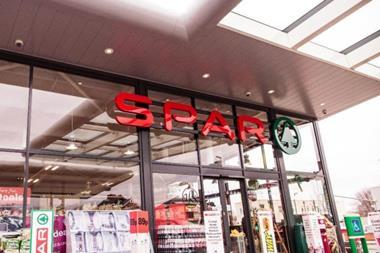
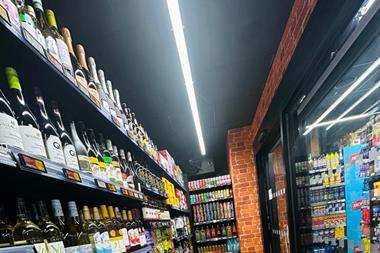
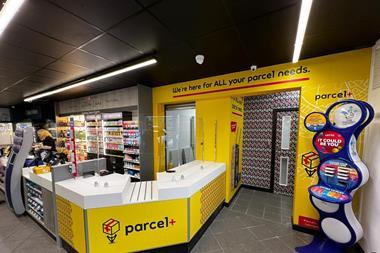

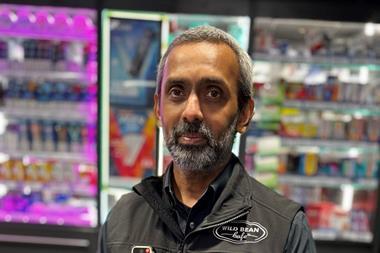
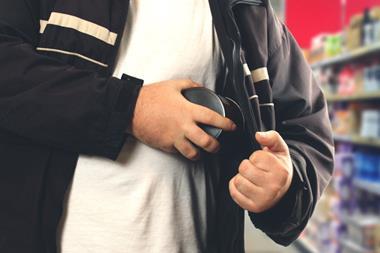

1 Readers' comment